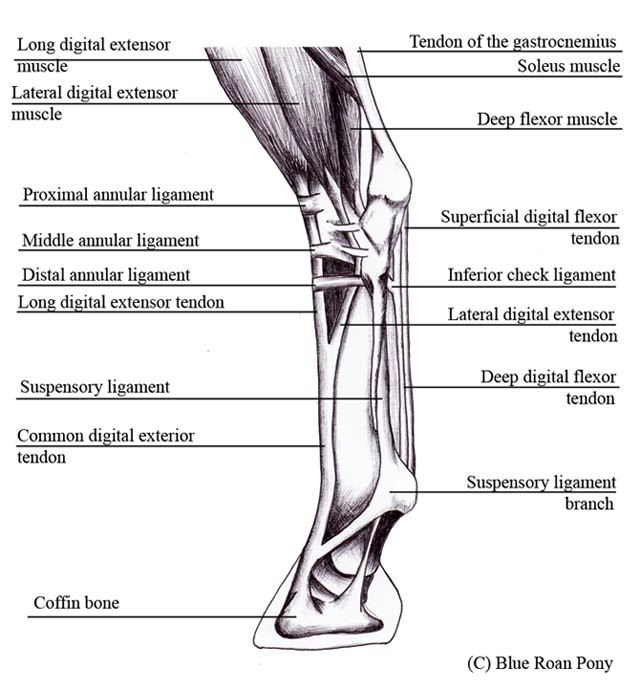
Forever Horses Anatomy of the Equine Hindleg
Horse Anatomy Horses have, on average, a skeleton of 205 bones. A significant difference in the bones contained in the horse skeleton, as compared to that of a human, is the lack of a collarbone. Their front limb system is attached to the spinal column by a powerful set of muscles, tendons and ligaments that attach the shoulder blade to the torso.
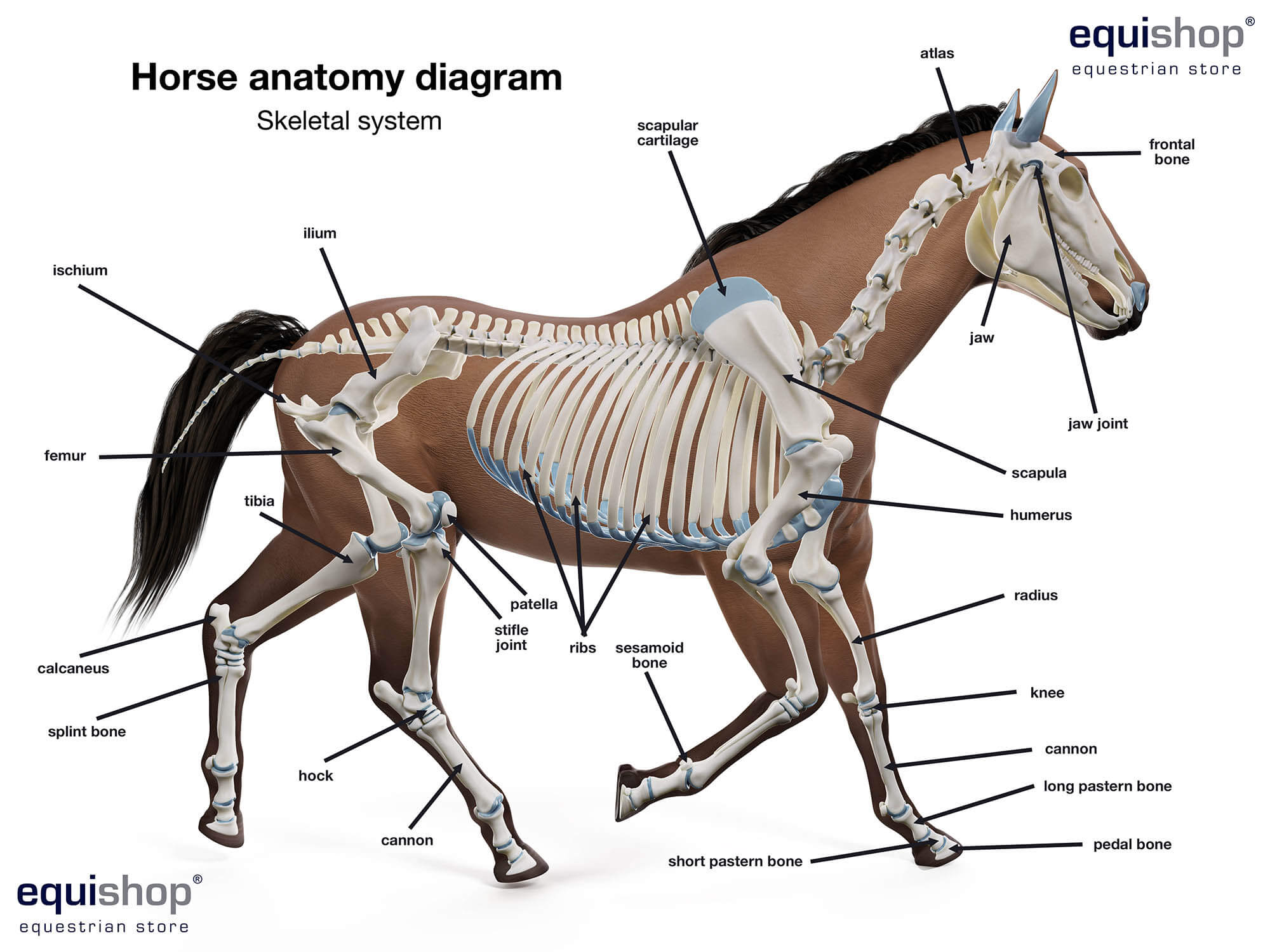
Horse anatomy diagrams of horse body parts Equestrian Shop
The horse leg anatomy in the rear includes the bones of the pelvis (the ilium, ischium, and pubic bones), femur, tibia, fibula, metatarsus, and phalanxes. It also includes the joints of the hip, stifles, hock, fetlock, pastern, and coffin. Hind limbs The top part of the hind limbs consists of three fused bones, called the ileum, ischium, and pubis.

Horse Leg Bone Diagram / 30 Leg Bones Diagram Wiring Diagram Database / The foot bones shown
Explore common leg conditions and bone injuries in horses, and learn about diagnosis, treatment, and prevention methods to keep your horse's legs healthy and strong. Anatomy of a Horse's Leg The anatomy of a horse's leg is a fascinating and complex system that allows these majestic creatures to move with power and grace.

Horse Life and Love The Hindleg
Skeleton of a horse The skeletal system of the horse is a skeletal system of a horse that has three major functions in the body. It protects vital organs, provides framework, and supports soft parts of the body. Horses typically have 205 bones. The pelvic limb typically contains 19 bones, while the thoracic limb contains 20 bones.
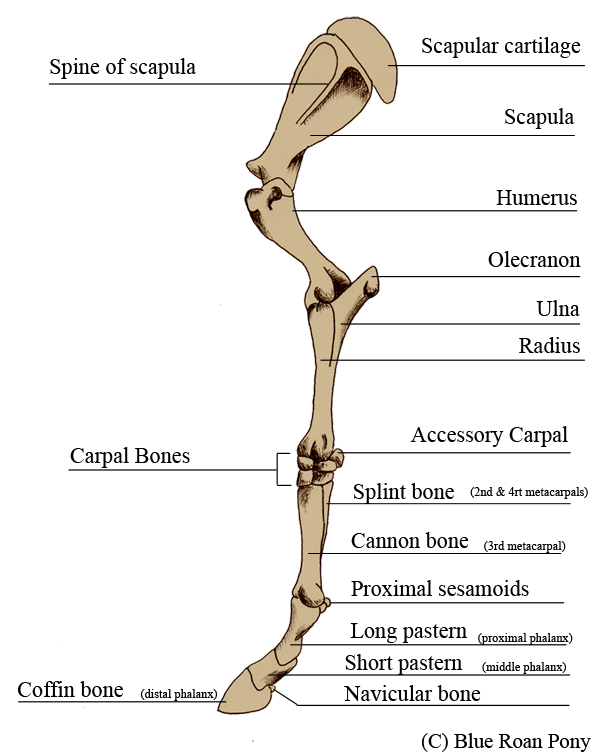
Forever Horses Anatomy of the Equine Forleg
But did you check eBay? Check Out At-at Leg on eBay. No matter what you love, you'll find it here. Search At-at Leg and more.

Forever Horses Anatomy of the Equine Forleg
Parts of the Hoof Structures of Lower Leg & Hoof How Do Horses Keep Their Shoes On? Warning! Graphic picture ahead! Angle of Shoulder = Pastern = Hoof Angle What Is The Correct Angle Of The Hoof? 70 degrees 40 degrees 45 degrees 50-54 degrees 52-58 degrees Angle of the Hoof Angle of the Hoof - Extremely Important!

Hoof anatomy Horse care, Horse anatomy, Anatomy
Types of posture of horse's back legs Horse pastern - faults, anomalies, ailments. Another important part of a horse's leg is the cannon bone. Its faults cause weakening of the limb. Forms of faults in the pastern of a horse: Pastern is too straight. Calf-kneed (short, straight pastern). Buck-kneed. Pastern with thin hock.

Equine Hind Limb Horse health, Horse anatomy, Horses
#1 - The Cannon Bone #2 - The Splint #3 - The Sesamoid bones #4 - The Fetlock #5 - The Pasterns #6 - The Coffin Bone Tendons of The Lower Leg Here are the most important tendons in a horse's legs: Common Horse Leg Problems Problem #1 - Lameness Signs of lameness in horses include: Abscess Laminitis A Tendon, Ligament, or Joint Injury or Sprain
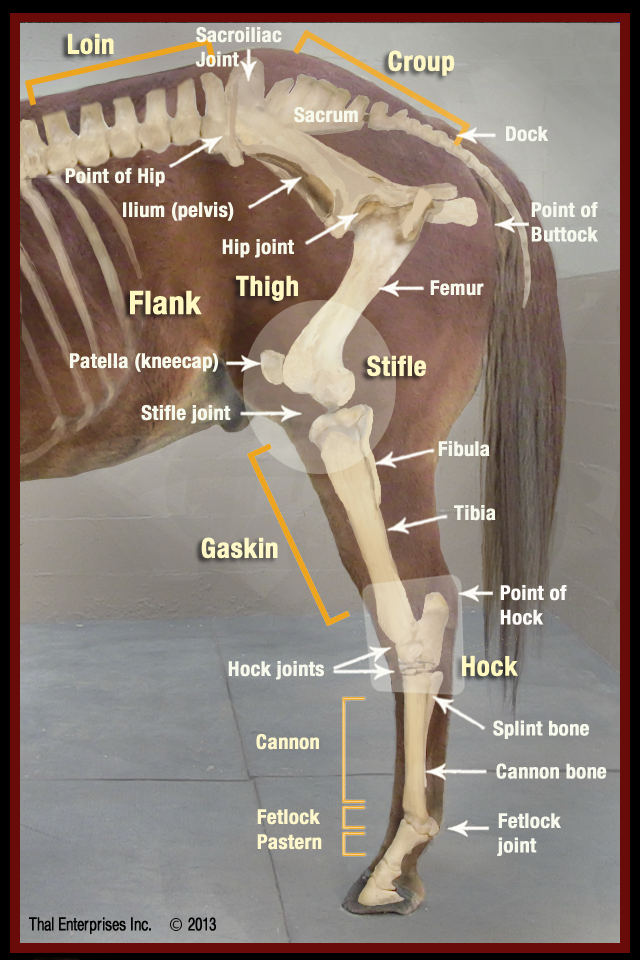
Lameness & The Lameness Exam What Horse Owners Should Know
Like a machine runs, the bones of a horse's body all work together to support and make the basic frame of the horse. The front legs of the horse are actually one of the most important parts of the horse's skeleton as these legs alone carry 60% of the horse's entire weight. Above is an image of the entire skeleton of a horse.
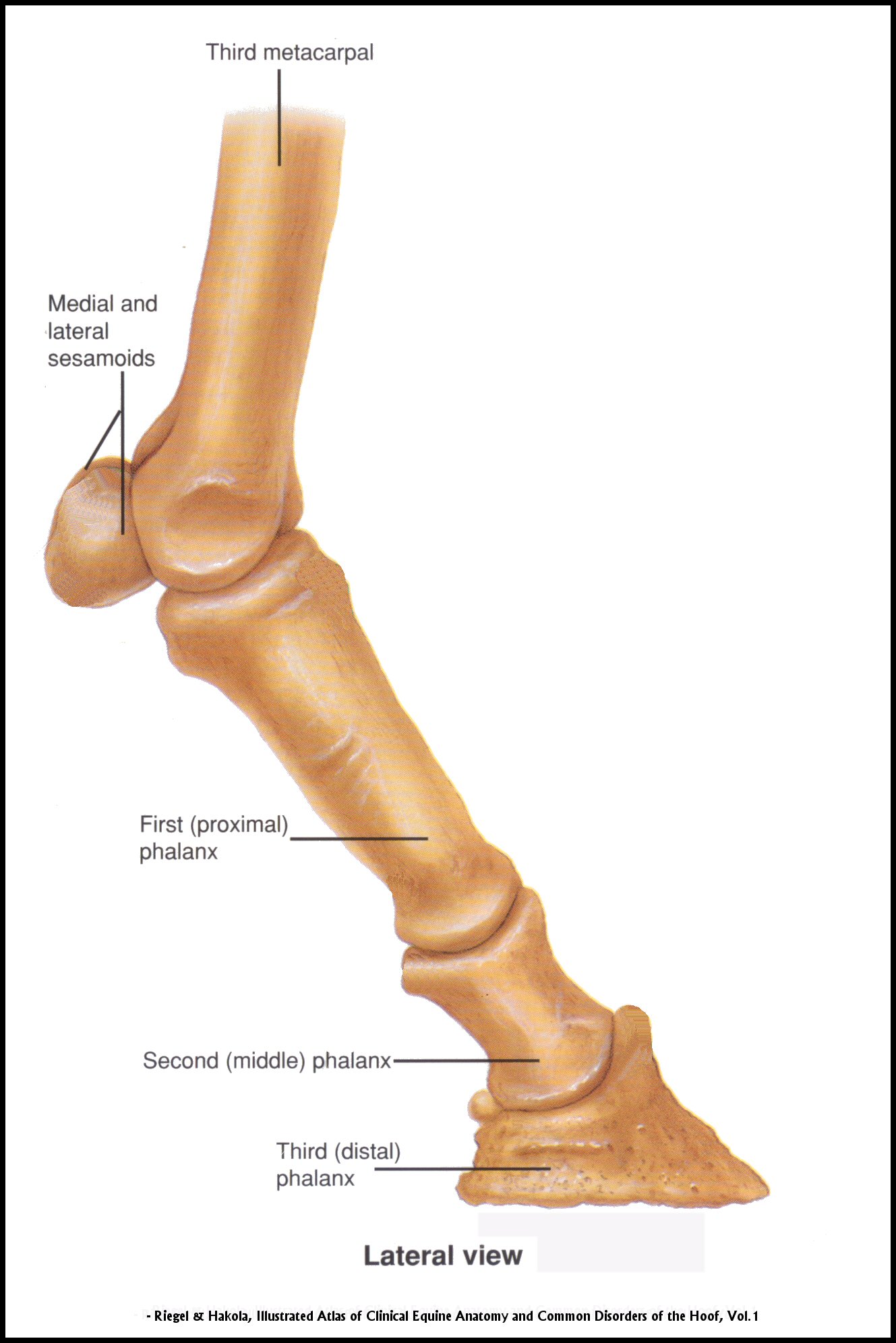
Hoof Angles Part 3 — Enlightened Equine
Anatomy Pelvic hind limb bears 40-45% of the weight and provides the majority of propulsion for locomotion. Bones Os coxae The Tuber coxae and tuber sacrale both palpable Tuber ischii is located underneath the hamstrings Femur Greater trochanter has a cranial and caudal part for gluteal attachments (deep & middle)

Horse Skeleton Horse anatomy, Horses, Pelvis anatomy
Healthier Livestock and Pastures - Lightweight Towed Manure Collectors. The Perfect Maintenance Groomer and Manure Collector for your Farm, Ranch or Home.
FileHorse leg, bones.JPG Wikipedia, the free encyclopedia
The pedal bone, also known as the coffin bone or P3, is the main bone in the foot. The navicular bone is a small bone located behind the pedal bone. The navicular bone functions as a pully for the deep flexor tendon that wraps around the navicular and is attached to the pedal bone. The horse's hind limbs

Vitals & Anatomy Horse Side Vet Guide Horse anatomy, Anatomy, Horse care
Cannon or cannon bone: the area between the knee or hock and the fetlock joint, sometimes called the "shin" of the horse, though technically it is the third metacarpal Chestnut: a callosity on the inside of each leg
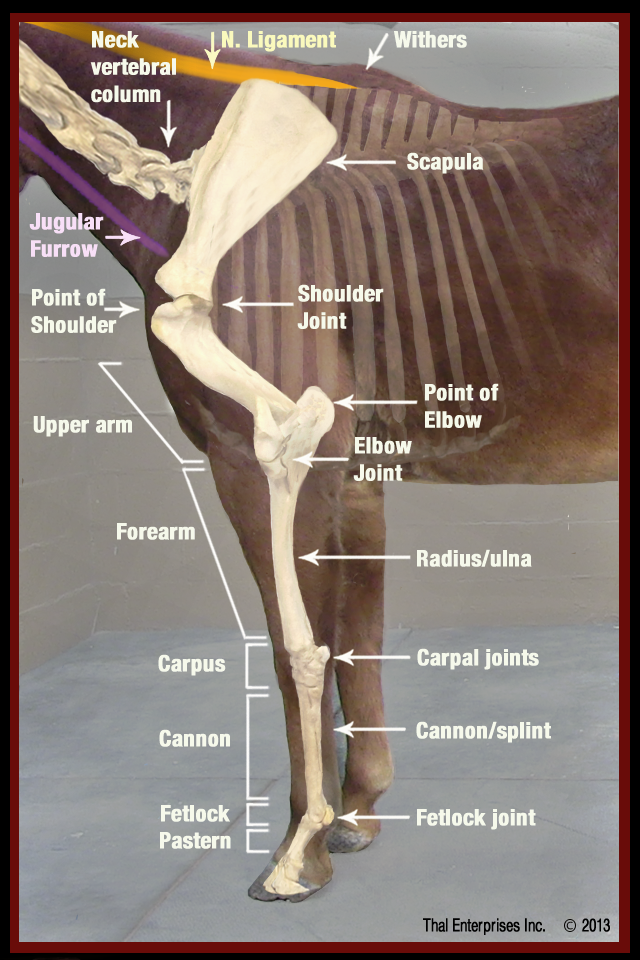
Vitals & Anatomy Horse Side Vet Guide
Firstly horse forelimb or front legs consist of following bones such as: Scapula Humerus Radius Ulna Carpus or Knee (comprise of 7 or 8 carpal bones) Large metacarpal bone (Cannon bone) Medial and small metacarpals ( also known as Two splint bones) First phalanx (Long pastern) Second phalanx (Short pastern) Third phalanx (Pedal bone)

horselowerleg «
Skeletal anatomy of a horse The limbs of the horse are structures made of dozens of bones, joints, muscles, tendons, and ligaments that support the weight of the equine body.
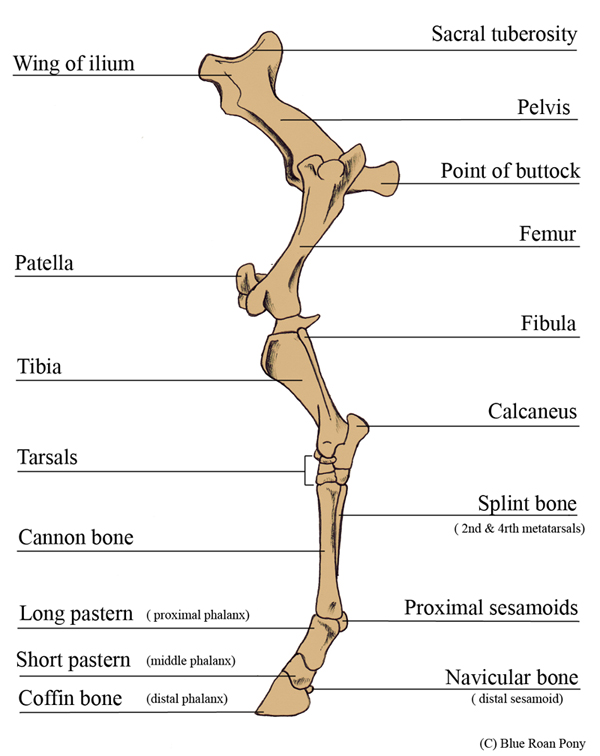
Forever Horses Anatomy of the Equine Hindleg
Horse - Bones of the cranium (Occipital bone, Temporal bone, Parietal bone.) Horse-Osteology: Cranium, Sutures of the head Vertebral column (Labeled atlas of veterinary anatomy: equine osteology on illustrations) Horse-Anatomy atlas: Vertebra C6